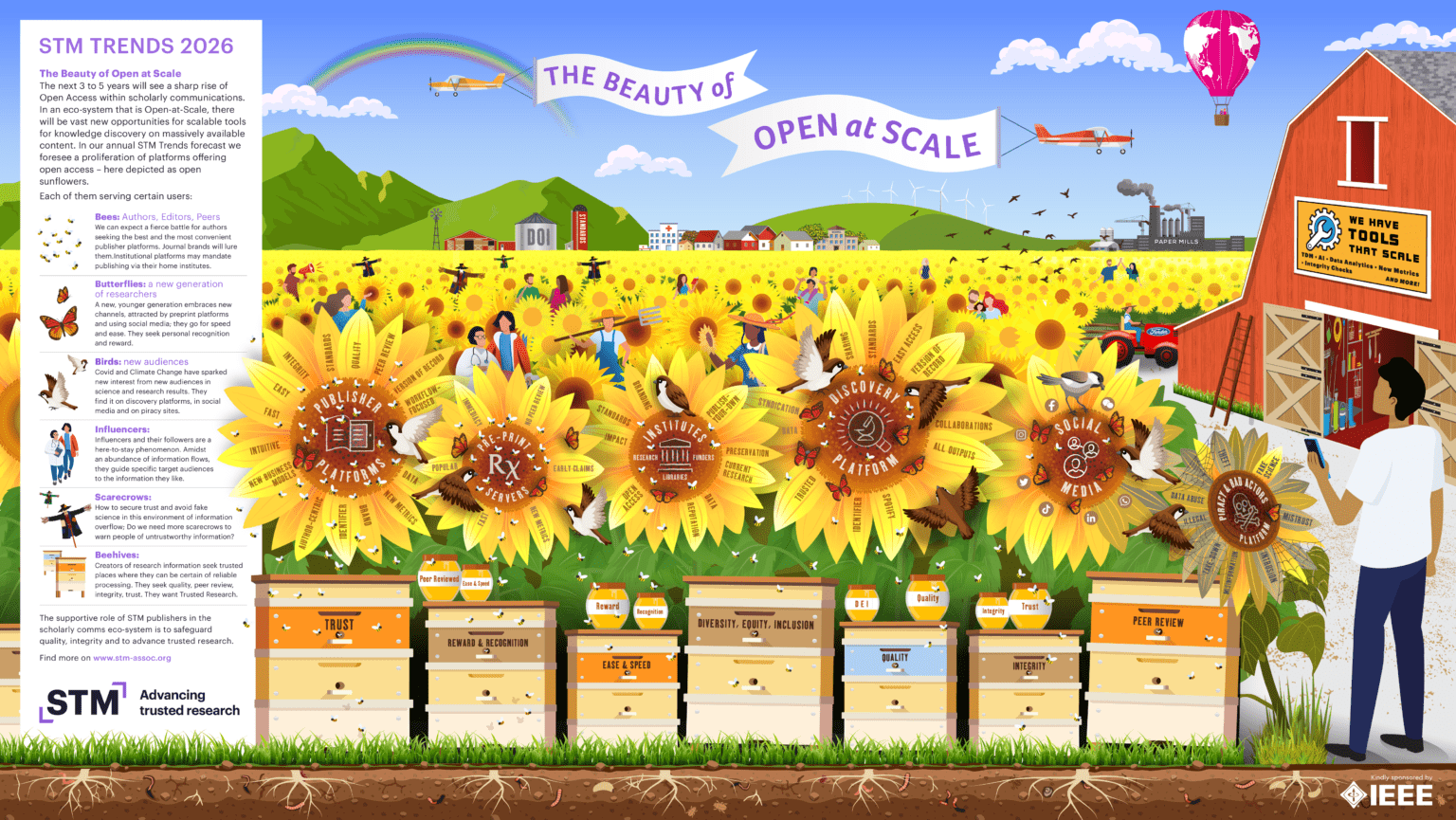STM Trends Forecasts Substantial Increase of Open Access With its Theme — “The Beauty of Open at Scale”

The annual STM Trends have made a return continuing its future-forward look at the scholarly communications ecosystem. Forecasting the surge of Open Access in the next three to five years, the STM Association has released its theme for this year: The Beauty of Open at Scale.
The theme of STM Trends 2026 depicts open sunflowers in an illustration. Estimated to have a significant impact on the scholarly communications landscape, with Open-at-Scale, the STM community can explore new opportunities for scalable tools for knowledge discovery on massively available content. The annual STM Trends Forecast anticipates a rapid growth of Open Access offering platforms displayed as open sunflowers with each sunflower serving stakeholders in the form of bees, butterflies, birds, influencers, scarecrows, and beehives.
Figuratively comparing Open Access to sunflowers, it is foreseen that as sunflowers Open Access will also bloom the research and publishing domain by enabling smoother and quicker dissemination of knowledge which will lead to rapid discovery and advancement in scientific research. However, as the “Pay-to-Publish” model seeps in the Open Access platforms, it is pivotal to understand what researchers think of it and how it will affect the foreseen forecast by the STM community. Take this survey now to make your word count as we attempt to decipher the influence of Open Access and the impact of APCs in scientific development.
STM Trends 2026 Infographic

Click here to download the infographic.
An Overview of the STM Trends 2026 Infographic
- All Open Access platforms are represented as a field of sunflowers and looks like a bustling place.
- The bees hovering over the sunflowers are the authors, editors, and peer reviewers. This signifies that these are the most active stakeholders of the research and publication world.
- Next on the field are the butterflies, which represent the next generation of researchers who sojourn on too many new platforms such as preprint servers for early claims and immediacy, and even make the most of the social media platforms to disseminate their research.
- Following the next generation of researchers are the curious audience of science, which are here depicted as birds. The audience that wants to be updated about the news, discoveries, and/or innovations in science that will directly impact them.
- Fertilizing the farm is the farmer who represents the funder of research, who is facilitating a productive and worthwhile research.
- However, as any farming field, the pest that could hinder the proliferation of platforms of Open Access is the need for trust in the system.
- Warning against misinformation in science are the scarecrows.
- It is imperative to have the Version of Record that is reliable, robust, and reviewed by research area experts, which are popularly known as peer reviewers.
- Finally, the beehives displayed in the frontline are where the research outputs are processed along with the principles of trust, quality, and peer review. Here is where authors can receive recognition and reward.
Find detailed information about the STM Trends 2026 Forecast here.









